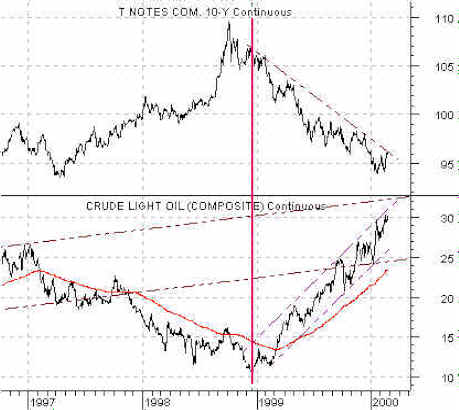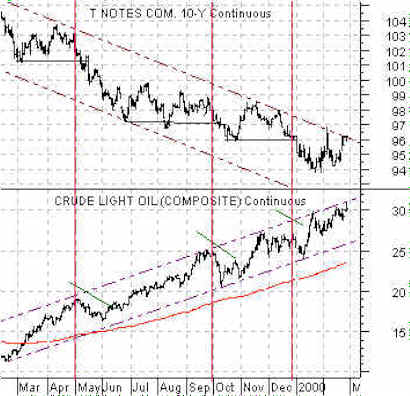Crude Oil and Bonds
One of the more fascinating inter-market relationships exists between the energy complex and interest rates. Since this relationship exists on two different levels, it often appears quite confusing. On a longer-term basis, rising energy prices put upward pressure on interest rates and vice versa.

The comparative chart of the U.S. 10-year T-Note futures and crude oil futures highlights just how powerful the relationship is between these two markets. The peak in interest rates (bottom in bond prices) tends to occur when crude oil, heating oil, and unleaded gasoline futures peak for the cycle. Typically the move from cycle bottom to cycle peak takes about 15 months.
In the short-term, however, there is more here than meets the eye. It may be common knowledge that rising energy prices affect interest rates, even in the absence of any discernible change in the overall inflation rate. But what is generally not known is which market drives the other. Intuitively we would think that rising energy prices are causing bond prices to fall, but in the short-term it is actually the other way around–falling bond prices (higher rates) cause energy prices to rise.
In the shorter-term chart of crude oil futures and T-Note futures shown below, it becomes clear that oil prices continue to work higher until bond prices make new lows. In other words, as long as note futures prices are trading above the recent lows, energy prices keep working higher. This process continues through the entire cycle until bond prices finally move low enough to impact both the financial markets and the economy, at which point oil prices collapse–marking the peak in interest rates.

In summary, then, we see that rising energy prices drive interest rates higher in the medium to long term, but that relatively firm bond prices tend to push crude oil prices higher in the short-term.


Join the discussion